Related Research Articles
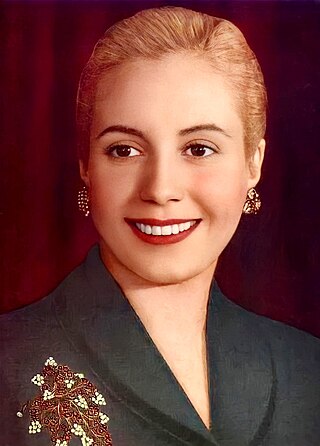
María Eva Duarte de Perón, better known as just Eva Perón or by the nickname Evita, was an Argentine politician, activist, actress, and philanthropist who served as First Lady of Argentina from June 1946 until her death in July 1952, as the wife of Argentine President Juan Domingo Perón (1895–1974). She was born in poverty in the rural village of Los Toldos, in the Pampas, as the youngest of five children. In 1934, at the age of 15, she moved to the nation's capital of Buenos Aires to pursue a career as a stage, radio, and film actress.

La Recoleta Cemetery is a cemetery located in the Recoleta neighbourhood of Buenos Aires, Argentina. It contains the graves of notable people, including Eva Perón, presidents of Argentina, Nobel Prize winners, the founder of the Argentine Navy, and military commanders such as Julio Argentino Roca. In 2011, the BBC hailed it as one of the world's best cemeteries, and in 2013, CNN listed it among the 10 most beautiful cemeteries in the world.

Carlos María de Alvear, was an Argentine soldier and statesman, Supreme Director of the United Provinces of the Río de la Plata in 1815.

José María Rosa, also known as Pepe Rosa, was an Argentine historian, one of the most notable of the Argentine nationalist revisionist historians.
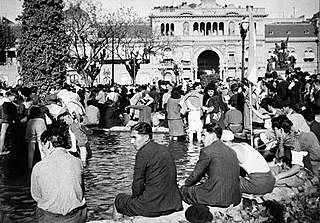
Descamisado is a Spanish word that literally means "without shirt" or "shirtless".
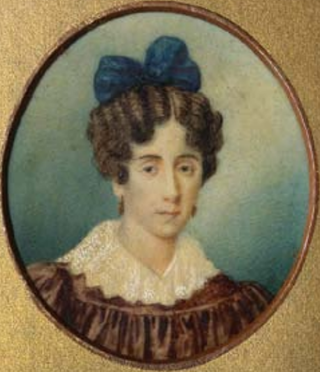
Mariquita Sánchez de Thompson y de Mendeville, also known as Mariquita Sánchez de Thompson, was an Argentine socialite and activist from Buenos Aires. She was one of the city's leading salonnières, whose tertulias gathered many of the leading personalities of the time. She is widely remembered because the Argentine National Anthem was sung for the first time in her home, on 14 May 1813.

The Argentine National Historical Museum is located in Buenos Aires, Argentina, and is a museum dedicated to the history of Argentina, exhibiting objects relating to the May Revolution and the Argentine War of Independence.
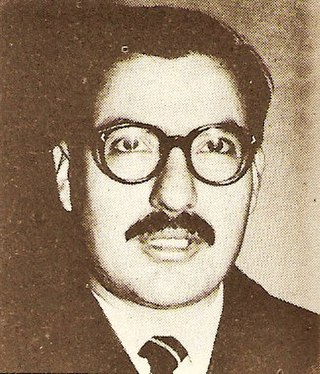
Fermín Chávez was an Argentine historian, poet and journalist, born in El Pueblito, a small town near Nogoyá, province of Entre Ríos. He studied humanities in Córdoba, philosophy in Buenos Aires, and devoted three years to the study of theology, canon law, archaeology and Ancient Hebrew in Cuzco, Peru.

The Eva Perón Foundation was a charitable foundation begun by Eva Perón, a prominent Argentine political leader, when she was the First Lady and Spiritual Leader of the Nation of Argentina. It operated from 1948 until it was forcibly dissolved by the military after the 1955 coup d'etat.
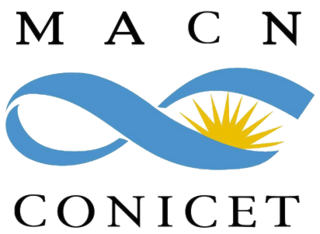
The Bernardino Rivadavia Natural Sciences Argentine Museum is a public museum located in the Caballito section of Buenos Aires, Argentina.
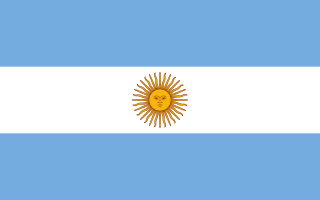
Argentine nationalism is the nationalism of Argentine people and Argentine culture. It surged during the War of Independence and the Civil Wars, and strengthened during the 1880s.
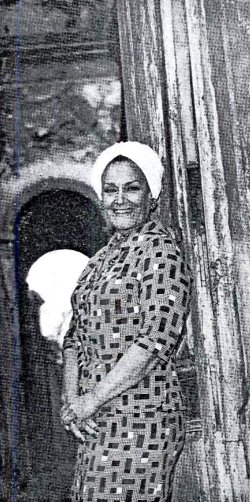
Juana Larrauri de Abramí, also known as Juanita Larrauri was a tango singer and was among a group of the first women elected to the Argentine Senate. She was elected twice as a senator and in both cases lost her seat as a result of right-wing military coups; she was elected in 1951 and lost her seat in 1955, then was elected again in 1973 and lost her seat again in 1976.
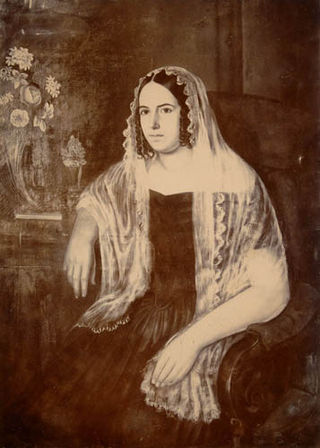
Agustina Ortiz de Rozas (1826-1898) was an Argentine philanthropist and political figure, president of the Sociedad de Beneficencia. She was the youngest sister of the general Juan Manuel de Rosas and was born in Buenos Aires. Ortiz married Lucio Norberto Mansilla at 15 years of age and had the five children: Lucio Victorio Mansilla, Eduarda, Lucio Norberto, Agustina and Carlos. She was renowned as one of the most beautiful women of her time according to many of her contemporaries. She played some role in Argentina's founding.
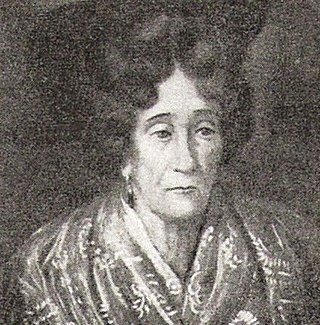
Mercedes de Lasala de Riglos or (incorrectly) Ana Lasala de Riglos, known as Madame Riglos, was an Argentine patriot and socialite during the period when Argentina was gaining its independence from Spain. Her home was a meeting place where information could be exchanged and the issues of the day discussed. In 1823 she was one of the founders of the famous philanthropic society Sociedad de Beneficencia de Buenos Aires and served as its first president.

Dora Beatriz Barrancos is an Argentine researcher, sociologist, historian, feminist, and politician.

Unzué Palace, also known as Quinta Unzué, was the presidential residence of the Argentine Republic during the presidency of Juan Domingo Perón (1946-1955), and became a place of pilgrimage and cult after the death of Eva Perón in 1952. The building's symbolic importance was such that, after the military coup that led to Perón's downfall in 1955, the dictators who subsequently took power ordered its complete demolition, in order to erase all traces of its former occupants.
References
- ↑ Shumway, Jeffrey M. (2019). A Woman, a Man, a Nation: Mariquita Sánchez, Juan Manuel de Rosas, and the Beginnings of Argentina. Albuquerque: University of New Mexico Press. p. 118. ISBN 978-082-636-091-5 . Retrieved 12 October 2022– via Google Books.
- ↑ García López, Ana Belén (2016-11-07), Las heroínas silenciadas en las independencias hispanoamericanas (in Spanish), Megustaescribirlibros, ISBN 978-84-9112-679-9 , retrieved 2017-11-30
- ↑ OSPAT (2017-04-18). "La sociedad de beneficiencia: inicio y culminación". OSPAT (in Spanish). Retrieved 2020-04-17.
- ↑ Madrid Paez, S. (1923). Sociedad de Beneficencia de la Capital. Su mision y sus obras. 1823-1932. Buenos Aires: Talleres Graficos del Asilo de Huerfanos.
- ↑ OSPAT (2017-04-18). "La sociedad de beneficiencia: inicio y culminación". OSPAT (in Spanish). Retrieved 2020-04-17.
- Laura Susana Golbert & Emilia Eugenia Roca, De la Sociedad de Beneficencia a los Derechos Sociales, primera edición. Buenos Aires, Ministerio de Trabajo, Empleo y Seguridad Social, 2010. ISBN 978-987-25026-2-1 (print) ISBN 978-987-25026-2-1 (web pdf)